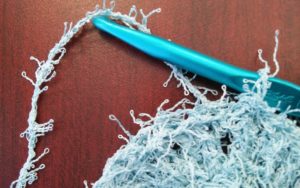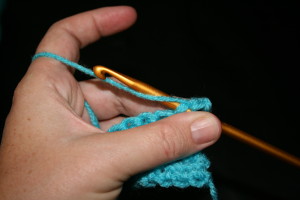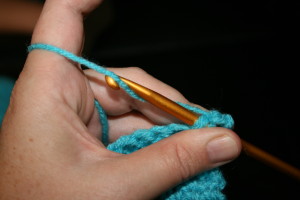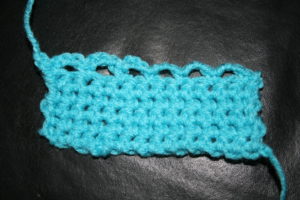 Scrubby is a crochet by feel! This yarn from Red Heart has been out for a little while, and it is quite unique. It has a variety of solid and variegated colors, and at first glance you may not believe it is a yarn.
Scrubby is a crochet by feel! This yarn from Red Heart has been out for a little while, and it is quite unique. It has a variety of solid and variegated colors, and at first glance you may not believe it is a yarn.
This 100% polyester yarn is actually a fine strand that is plies together with 2 overtwisted threads. Overtwist is when a yarn or fiber is twisted in a continuous direction until it begins to bunch up or twist back on itself. This is sometimes noted as the “twist energy” of a yarn. You can see an example of it for yourself by taking any fiber of yarn you have at hand and holding it firmly on one end, twist the other end either clockwise or counter clockwise until bumps begin to appear. These bumps are points where the strand is beginning to ply onto itself. At this point you can bring both ends together, then grasp the middle and attempt to straighten the strands, let go of the middle and watch the strand twist.
 This yarn has 2 overtwisted threads that have twisted bumps in various points throughout its length, this is what creates the unique scrubbing quality of the yarn.
This yarn has 2 overtwisted threads that have twisted bumps in various points throughout its length, this is what creates the unique scrubbing quality of the yarn.
This yarn probably has more uses then comes to my mind. With these scrubby bumps it does not provide a much defined stitch, so I do not recommend this yarn for beginning stitchers as it is difficult to see you stitches. It is designed for dishcloths and I can tell you I am sure it will fit that build very well. I know some that have used it to create body scrubs and have been quite happy. It is definitely not soft enough for garments, but could find a use in possible lite rugs or toys.
If you have been crocheting for a while, then you may want to give Scrubby a try. Just remember since crochet is forgiving, that not knowing where the stitches are, and crocheting by feel, can still be a great success.



